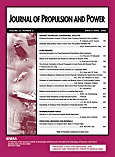
JOURNAL OF PROPULSION AND POWER
Scope & Guideline
Pioneering Research for Tomorrow's Propulsion Systems
Introduction
Aims and Scopes
- Propulsion Systems Development:
The journal focuses on the development and optimization of various propulsion systems, including liquid and solid rocket engines, electric propulsion, and hybrid systems, aiming to improve efficiency and performance. - Combustion Dynamics and Stability:
Research on combustion processes, including stability analysis, combustion instabilities, and the effects of different propellant compositions, is a core area, contributing to safer and more efficient engine designs. - Numerical and Experimental Methodologies:
The journal emphasizes the use of both numerical simulations and experimental methods to validate models and theories, fostering a comprehensive understanding of propulsion phenomena. - Innovative Materials and Propellants:
Studies on new materials and propellant formulations, including environmentally friendly options and advanced composite materials, are crucial for the development of next-generation propulsion systems. - Advanced Diagnostics and Measurement Techniques:
The journal promotes research on advanced diagnostic techniques for propulsion research, such as laser diagnostics and spectroscopic methods, which enhance the understanding of combustion and flow dynamics.
Trending and Emerging
- Hybrid Propulsion Systems:
There is a significant increase in research focused on hybrid propulsion systems, combining the benefits of solid and liquid propulsion technologies, which reflects the industry's movement towards versatile and efficient solutions. - Green and Sustainable Propellants:
Research on environmentally friendly propellants is gaining traction, with an emphasis on developing sustainable alternatives that minimize environmental impact while maintaining performance. - Advanced Computational Modeling Techniques:
The use of sophisticated computational models, including machine learning and advanced simulations, is becoming more prevalent, enabling researchers to predict performance and optimize designs more effectively. - Electrospray and Electric Propulsion Technologies:
Interest in electrospray propulsion and other electric propulsion technologies is rapidly increasing, driven by their potential for high efficiency and application in small spacecraft and micro-propulsion systems. - Combustion Instability Control Mechanisms:
There is a growing focus on understanding and controlling combustion instabilities, with innovative solutions being proposed to enhance engine stability and performance in various operating conditions.
Declining or Waning
- Traditional Solid Rocket Propulsions:
While solid rocket propulsion remains a foundational area, there has been a noticeable decrease in publications focused exclusively on traditional solid propellant technologies, possibly due to the growing interest in hybrid and electric propulsion systems. - Conventional Liquid Propellant Systems:
Research specifically targeting conventional liquid propellant systems has decreased, as the field shifts towards more innovative and sustainable alternatives, including green propellants and hybrid systems. - Classical Engine Performance Analysis:
The focus on classical performance analysis of engines, without integration of modern computational techniques or new materials, is declining as researchers aim for more comprehensive approaches that incorporate advanced modeling and experimental validation. - Basic Turbomachinery Studies:
There appears to be a reduction in studies centered on traditional turbomachinery without innovative applications, as research increasingly emphasizes integration with novel propulsion technologies and energy systems. - Static Testing Methods:
Static testing methodologies for propulsion systems are becoming less prominent, with a shift towards dynamic and operational testing that better reflects real-world performance and operational conditions.
Similar Journals

CEAS Space Journal
Unveiling the mysteries of the cosmos through rigorous inquiry.CEAS Space Journal, published by SPRINGER WIEN, serves as a critical platform for advancing knowledge in the fields of aerospace engineering and space science. With an ISSN of 1868-2502 and an E-ISSN of 1868-2510, this journal has been at the forefront of scholarly communication since its inception in 2011, showcasing cutting-edge research that spans to the present day (2024). The journal holds a solid reputation, ranking in the Q2 quartile for Aerospace Engineering and Q3 for Space and Planetary Science as of 2023, illustrating its impactful contributions within these disciplines. Scopus rankings further underline its prominence, placing it in the 70th percentile among aerospace engineering journals. Although it is not an open access publication, the insights published in the CEAS Space Journal are invaluable for researchers, professionals, and students alike, providing essential studies and reviews that push the boundaries of aerospace innovation and planetary exploration. The journal's commitment to quality and rigor makes it an indispensable resource for anyone looking to deepen their understanding of contemporary challenges and technological advancements in space science.
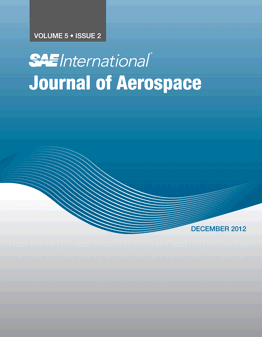
SAE International Journal of Aerospace
Exploring New Frontiers in Aerospace Research.The SAE International Journal of Aerospace, published by SAE International, serves as a critical platform for innovative research and advancements within the field of aerospace engineering. With an ISSN of 1946-3855 and an E-ISSN of 1946-3901, this esteemed journal contributes significantly to the body of knowledge in the aerospace sector, boasting a convergence span from 2008 to 2024. While currently categorized in Q4 of Aerospace Engineering, the journal is dedicated to fostering emerging ideas, technologies, and methodologies that could eventually elevate its standing. Although it does not offer open access options, the journal ensures wide dissemination of its well-curated articles to aid researchers, professionals, and students in staying abreast of the latest developments and trends. Given its distinct focus and commitment to the aerospace community, the SAE International Journal of Aerospace plays an essential role in bridging theory and practice, making it a valuable resource for those within this vital and evolving field.
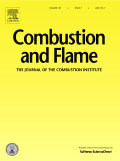
Combustion and Flame
Exploring the Dynamics of Flame and FuelCombustion and Flame is a premier academic journal published by Elsevier Science Inc, dedicated to advancing the field of combustion science. Since its inception in 1957, this journal has consistently provided a platform for rigorous research and groundbreaking discoveries in the realms of Chemical Engineering, Chemistry, and Energy Engineering, illustrating a significant Q1 ranking across multiple categories, including Fuel Technology and Physics. With an impressive Scopus ranking, comprising the top 10% in fields such as General Physics and Astronomy, and General Chemical Engineering, Combustion and Flame serves as a critical resource for researchers, professionals, and students aiming to explore the complexities of combustion phenomena and their applications. Although it does not offer open access, the journal is known for its comprehensive articles and innovative research papers, fostering scholarly dialogue and the development of emerging technologies. The journal aims to connect researchers globally, ensuring that important findings are shared and disseminated effectively.
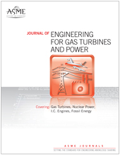
JOURNAL OF ENGINEERING FOR GAS TURBINES AND POWER-TRANSACTIONS OF THE ASME
Elevating Knowledge in Gas Turbine TechnologiesJournal of Engineering for Gas Turbines and Power - Transactions of the ASME, published by the esteemed American Society of Mechanical Engineers (ASME), is a leading interdisciplinary journal dedicated to advancing the fields of energy engineering, aerospace, nuclear energy, and mechanical engineering. With an impressive history dating back to 1960 and continuing its contributions through 2024, this journal boasts a Q2 ranking in multiple engineering categories, reflecting its strong impact on both academia and industry. Although not an open-access journal, it provides invaluable insights and research findings that cater to the needs of professionals, researchers, and students alike. The journal's ISSN is 0742-4795 with an E-ISSN of 1528-8919, ensuring widespread visibility in the global academic community. Indexed in Scopus, it ranks notably within its fields—21st in Nuclear Energy and Engineering and 51st in Aerospace Engineering—underscoring its relevance and contribution to critical technological advancements. Researchers in this domain will find the journal a vital resource for innovative studies, practical applications, and the latest developments related to gas turbines and power generation.
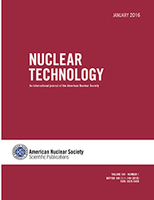
NUCLEAR TECHNOLOGY
Illuminating Insights in Nuclear ScienceNUCLEAR TECHNOLOGY is a leading academic journal published by TAYLOR & FRANCIS INC, dedicated to the expansive field of nuclear science and engineering. With a robust ISSN of 0029-5450 and an E-ISSN of 1943-7471, this journal provides invaluable insights and cutting-edge research from 1971 to 2024. Positioned in the esteemed Q2 category for Condensed Matter Physics, Nuclear and High Energy Physics, and Nuclear Energy and Engineering, it boasts respectable Scopus rankings, underscoring its impact and relevance within the academic community. NUCLEAR TECHNOLOGY serves as a crucial platform for researchers, professionals, and students, fostering an exchange of knowledge that advances the understanding and application of nuclear technologies. While it operates on a subscription model, this journal remains a vital resource for those aiming to contribute to or stay at the forefront of developments in nuclear technology.

International Journal of Aeronautical and Space Sciences
Transforming Ideas into Aerospace AdvancementsThe International Journal of Aeronautical and Space Sciences, published by Springer, is a prominent platform dedicated to advancing research and innovation in the fields of Aerospace Engineering, Control and Systems Engineering, Electrical and Electronic Engineering, and Materials Science. With an ISSN of 2093-274X and an E-ISSN of 2093-2480, the journal has established itself as a vital resource since its inception in 2011, currently offering insights that span a wide range of contemporary challenges and technological advancements in aeronautics and space exploration. Ranking in the Q2 category across multiple disciplines, including Aerospace and Control Engineering, signifies its recognized impact and quality within the academic community. Although not an open-access journal, it remains accessible to researchers, professionals, and students seeking to enhance their understanding of complex aerospace systems and their applications. The journal’s commitment to publishing high-quality research makes it indispensable for those aiming to contribute to, or stay informed about, the evolving landscape of aerospace technology.

SHOCK WAVES
Pioneering Research in Aerospace and Materials ScienceSHOCK WAVES, an esteemed journal published by SPRINGER, serves as a vital platform for researchers and professionals in the fields of Mechanical Engineering and Physics and Astronomy. Since its inception in 1991, this journal has significantly contributed to the understanding of shock wave phenomena across various applications, from aerospace engineering to materials science. With an impressive rank of #82 out of 243 in the general physics and astronomy category and a Q2 ranking in both Mechanical Engineering and Physics and Astronomy in the 2023 category quartiles, SHOCK WAVES is recognized for its rigorous peer-reviewed content. Although it operates under a traditional publishing model, it remains a crucial resource for accessing cutting-edge research, proven methodologies, and innovative findings. The journal aims to disseminate high-quality articles that foster scientific discussions and pave the way for future advancements in these dynamic fields, making it an indispensable resource for academics, practitioners, and students alike.
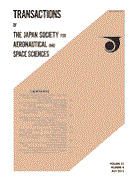
TRANSACTIONS OF THE JAPAN SOCIETY FOR AERONAUTICAL AND SPACE SCIENCES
Illuminating the Journey of Space ExplorationTRANSACTIONS OF THE JAPAN SOCIETY FOR AERONAUTICAL AND SPACE SCIENCES is a distinguished journal published by the Japan Society for Aeronautical and Space Sciences, focusing on the latest advancements and research in the fields of aerospace engineering and space and planetary science. With a broad range covering theoretical studies, practical applications, and experimental research, this journal serves as a vital platform for researchers, professionals, and students keen to explore the intricacies of aeronautics and space technologies. Although currently closed to open access, the journal maintains a significant presence in the academic community, boasting a 2023 Scopus ranking of Q3 in both of its respective fields and offering insights that contribute to ongoing discussions and innovations in aerospace. Since its inception in 1969 and with publications extending to 2024, the journal not only reflects the evolving landscape of aeronautics and space sciences but also encourages discourse that paves the way for future breakthroughs. For your engagement and contributions to this dynamic field, the TRANSACTIONS OF THE JAPAN SOCIETY FOR AERONAUTICAL AND SPACE SCIENCES stands as an essential resource.
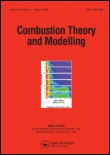
COMBUSTION THEORY AND MODELLING
Exploring the Dynamics of Combustion ProcessesCombustion Theory and Modelling is a pivotal journal for researchers and professionals in the fields of chemical engineering, energy technology, and combustion science. Published by Taylor & Francis Ltd, this journal, with an ISSN of 1364-7830 and E-ISSN 1741-3559, provides a platform for disseminating significant advances in our understanding of combustion processes and their applications. With a solid impact factor, as reflected in its Q2 ranking across multiple categories including Chemical Engineering, Energy Engineering, and Modeling and Simulation, it serves not only to enhance theoretical knowledge but also to bridge the gap between theory and practical applications. The journal spans a wide timeline from 1997 to 2024, ensuring that it covers both foundational studies and cutting-edge research. Situated in the UK, the journal actively invites submissions that contribute to the evolving landscape of combustion science, making it an essential resource for academics, industry professionals, and students keen on exploring the dynamics of energy and fuel technologies.
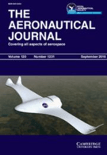
AERONAUTICAL JOURNAL
Pioneering research in aeronautical engineering.Aeronautical Journal, published by Cambridge University Press, is a premier scholarly journal dedicated to advancing the field of aerospace engineering. With a notable impact factor, this journal holds a strong position in the academic community, ranked #53 out of 153 in the Scopus category of Aerospace Engineering, placing it in the 65th percentile. The journal has been providing a platform for groundbreaking research since its inception in 1969, and continues to be a vital resource for researchers, professionals, and students involved in aeronautics. As a Q2 journal in the 2023 Aerospace Engineering category, it offers high-quality articles that cover a range of topics within the discipline, contributing to the ongoing discourse and innovation in aerospace technologies. Although not an open-access journal, it remains accessible to a vast readership through institutional subscriptions and partnerships. The Aeronautical Journal is a crucial publication for those seeking to stay at the forefront of aerospace research and development.